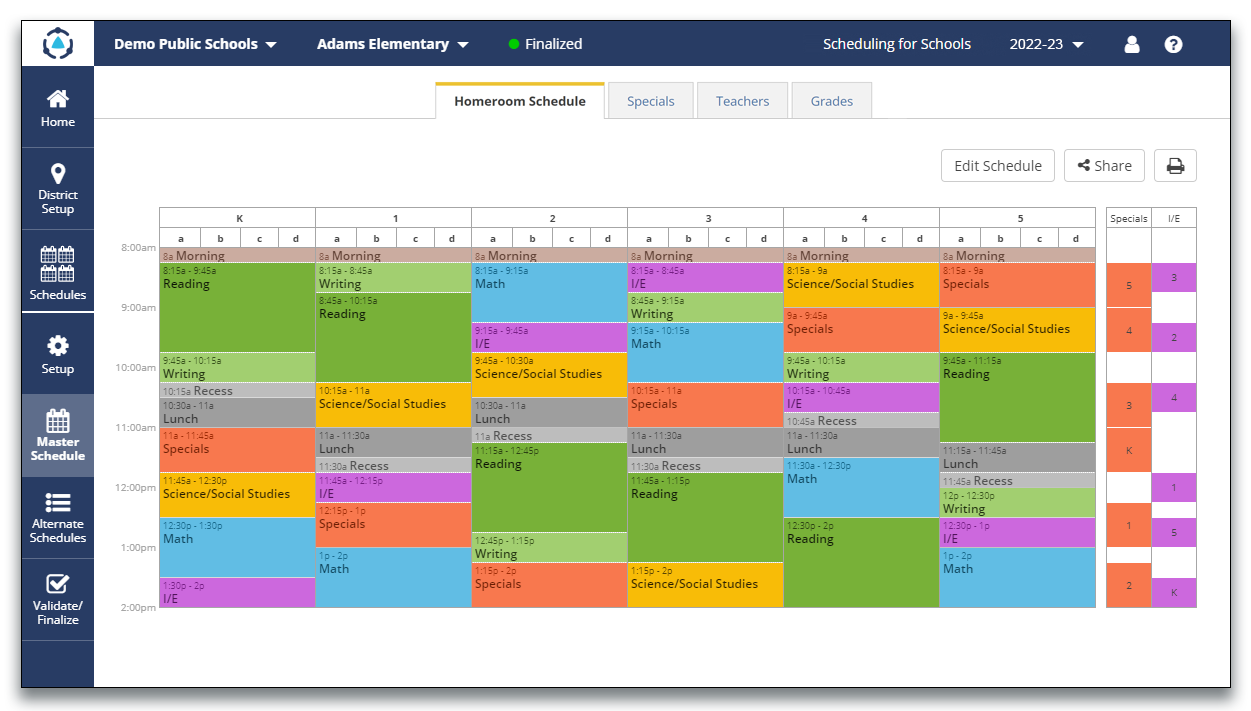
Building an Elementary Schedule - Part 2: Setting Up Expectations and Goals for Your School Schedule
This 12-part series on How to Build an Elementary School Schedule offers step-by-step guidance and proven scheduling strategies for creating a better elementary school schedule.
Developing goals and expectations for your elementary school schedule is a critical step in preparing for the new school year. By establishing clear objectives beforehand, you can create a school schedule that aligns with your district and school's strategic goals and focuses on student achievement. We'll explore this in more detail.
1. Identify your non-negotiables
All scheduling decisions and trade-off discussions will be guided by your scheduling goals and non-negotiables. The following are examples of non-negotiables:
• Protect math and reading blocks (no pull-out supports)
• Daily intervention and enrichment (30-minute minimum)
• Collaboration opportunities for grade-level teachers every day
2. Define instructional minutes and guidelines
Defining clear grade-level instructional minutes and guidelines is critical in setting clear expectations for student access to instruction across schools and classrooms. These include the required subjects and the minimum amount of time each grade should receive instruction for each subject before expanding to ensure equity for each student.
The following questions may help you:
• At each grade level, how many minutes of Reading, Writing, Math, Science, Social Studies, and Intervention should students receive each day?
• What are your current state-level and district-level requirements?*
• Given your curriculum, what are the requirements for quality instruction?
• Is your school fully compliant with state, district, and curriculum-specific requirements?
• Do ELA or Math minute guidelines need to be decomposed to outline time for specific components (e.g. Phonics, Fluency, etc.)?
* To ensure you're up to date with requirements, review the state and district guidelines annually. There are often discrepancies between long-standing practices and current regulations. Set specific expectations for pull-out and push-in services
3. Set specific expectations for pull-out and push-in services
• When is it appropriate to provide push-in or pull-out services to students?
• During core instruction like ELA and Math, have you established clear expectations to prevent pull-out services for “extra” help from interfering with core instruction?
• In the event that you block pull-out from some subjects, when is it OK to provide pull-out services (such as Intervention, Social Studies, Other)?
• Do you allow push-in services for subject-related support if you block pull-out (e.g. push-in math intervention during math small group)?
• Do push-in services only apply to certain segments of instruction (e.g., reading support during Independent Reading time)
The above guidelines provide basic tips to help clarify and set school schedule expectations. Remember to align these concepts with the strategic goals for your district and schools to ensure you get the greatest impact from your schedules and meet the needs of all students.
Need Support with Scheduling?
DMSchedules Can Help.
The key to scheduling success is preparation and planning. Start taking action now so that you and your scheduling team are well-positioned for success this scheduling season. If you need help building your elementary school schedule, reach out to us. We can take scheduling off your plate, and create your school schedule aligned with your learning goals.

